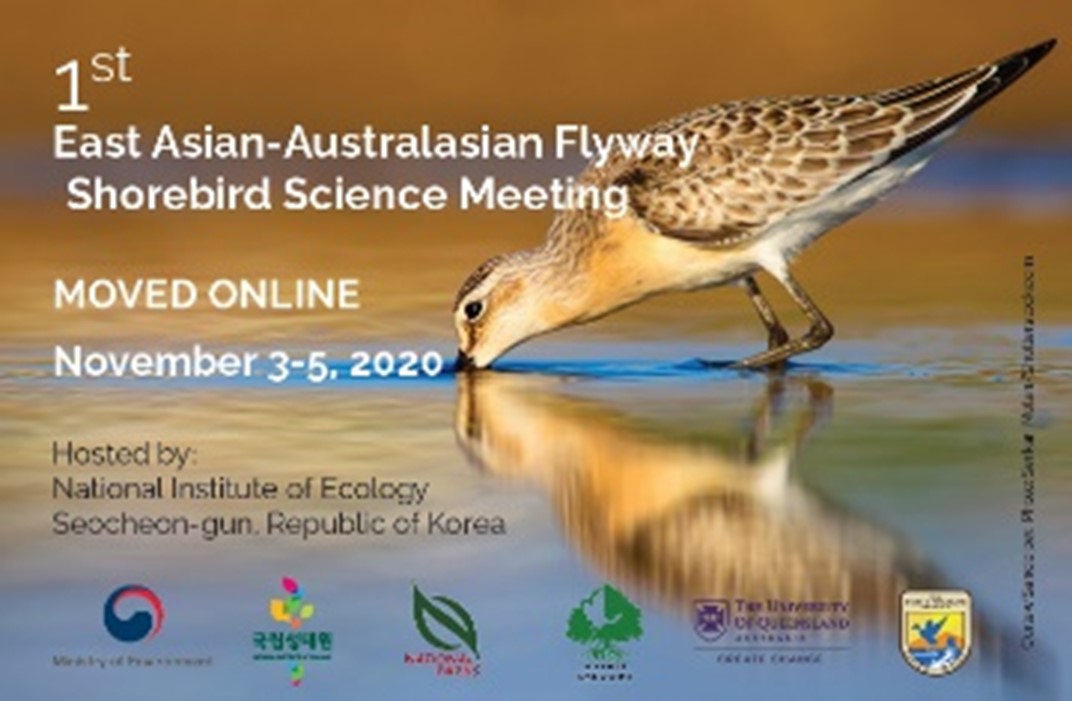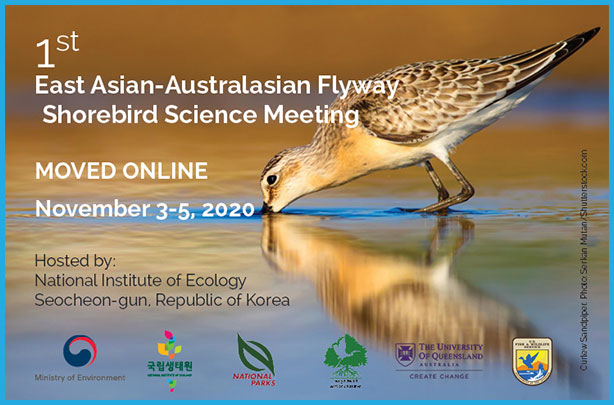
Over 400 people from 39 countries/regions registered for the 1st East Asian-Australasian Flyway Shorebird Science Virtual Meeting (EAAFSSM) that took place from November 3rd to 5th, 2020. Participants joined live online discussions, workshops, 5 keynote talks and 80 presentations across 18 sessions that addressed a myriad of topics on shorebird research and conservation. Almost 100 experts and students show cased their activities within the flyway.
The goals of this meeting were:
- to promote research that provides an evidence base for monitoring, management, conservation and education/outreach relevant to shorebirds in East Asia and Australasia.
- to provide a structured forum to facilitate, coordinate, and enhance the exchange of shorebird information among interested parties.
- to promote the conservation of shorebirds in the East Asia and Australasian Flyway.
Presentations were recorded where possible and are available on the YouTube channel [here].
Originally planned as an in-person event, the conference moved online due to concerns surrounding COVID-19. To help prepare for the event and to handle the transition to an online environment, the Organizing Committee had 22 online meetings over 18 months. The Organizing Committee developed an information package and program schedule for participants, five newsletters, instructions for chairs, and designated moderators and IT staff for each session to help ensure the event ran smoothly. The meeting was co-hosted by National Institute of Ecology (NIE) from the Republic of Korea, U.S. Fish and Wildlife Service, National Parks Board in Singapore, the Conservation of Arctic Flora and Fauna’s International Secretariat (CAFF), and the University of Queensland. Sponsorship was received from the Ministry of Environment in Republic of Korea, Lotek Wireless, Migrate Technology Ltd., and Druid Technology Co. Ltd. Please visit the official webpage at: https://www.eaafssm.com for more information.
Sponsors provided opportunities for a variety of competitions. Tracking devices from Migrate Technology Ltd. were awarded to Drs. Cheng Yachang, Song Zitan, and Liu Yang to quantify the migratory behaviour and identify critical habitats for the White-faced Plover. Similarly, tracking devices from Druid Technology Co. Ltd were awarded to Philipp Maleko, Dr. Vladimir Pronkevich, and Dr. Konstantin Maslovsky to investigate the breeding and migratory ecology of Nordmann’s Greenshank.
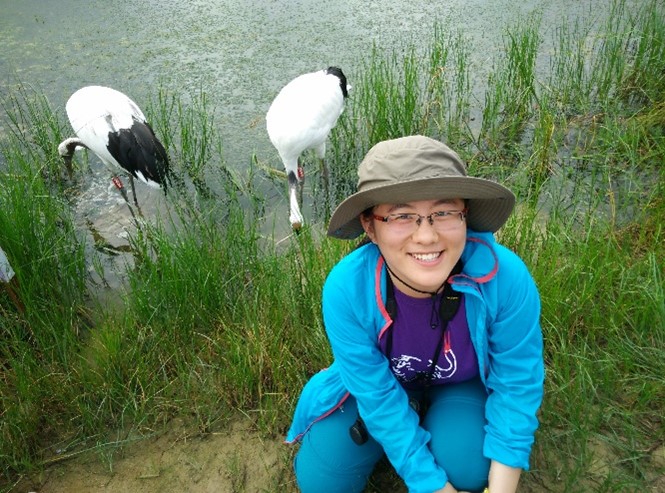 Awardee for tracking competition, Cheng Yachang |
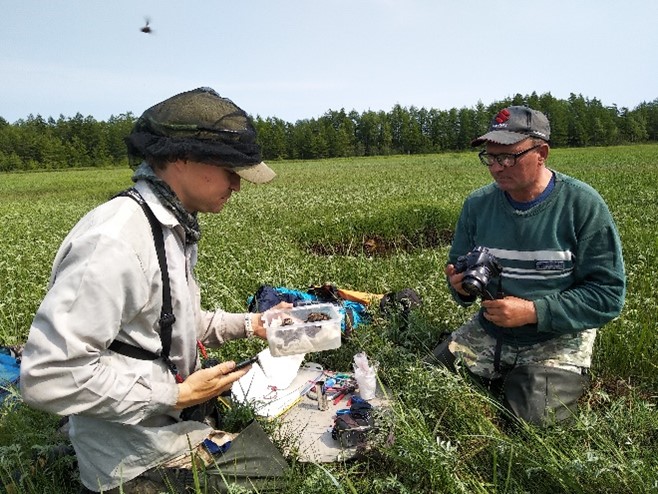 Awardees for tracking competition, Philipp Maleko and Vladimir Pronkevich |
We also had a video competition to celebrate the flyway’s shorebirds. The best video award went to Javica Faye Canage for her video entitled “My EAAF Winged Friends”. She received a $200 prize from Lotek Wireless. Ying Chi (Ginny) Chan was awarded the best student presentation for her talk entitled “Applications of satellite tracking of shorebirds in coastal conservation”, while Sayam Chowdhury won the second best presentation for his talk entitled “Promoting alternative livelihoods in Myanmar and Bangladesh to reduce hunting pressure on Spoon-billed Sandpiper and other shorebird species”. They received $200 and $100 prizes, respectively, from Lotek Wireless.
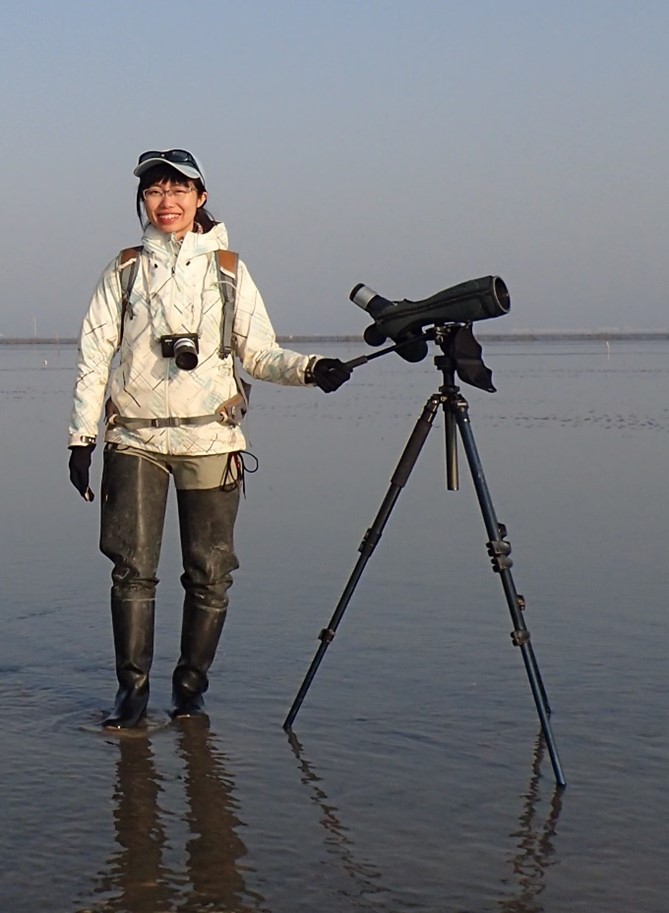 Ying Chi (Ginny) Chan, Best student presentation awardee |
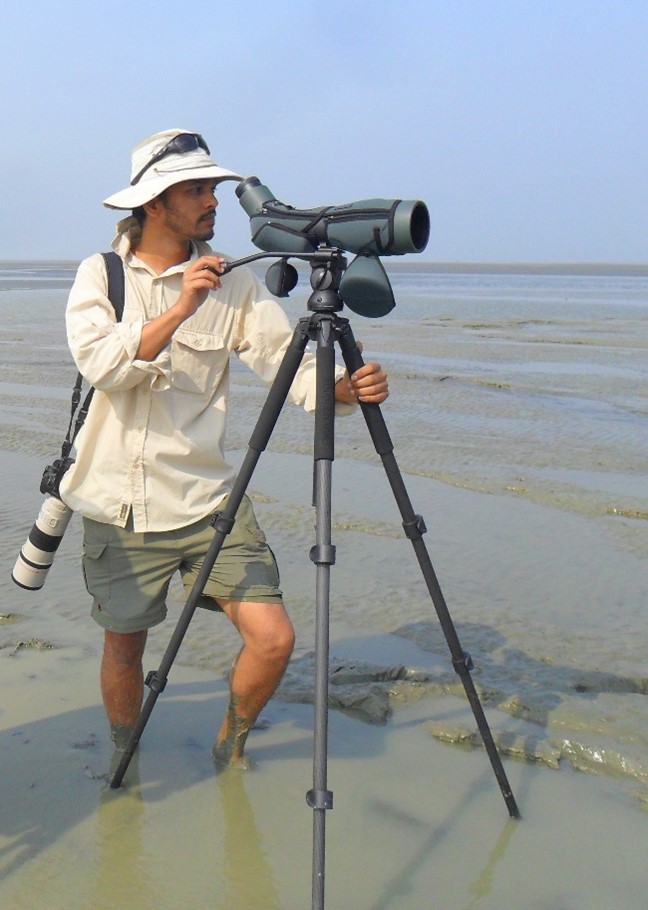 Sayam Chowdhury, Second best student presentation awardee |
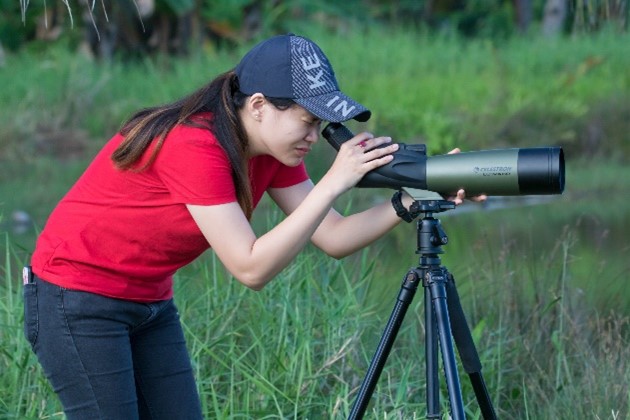 Best video awardee, Javica Faye Canage |
|
For those who registered and attended the meeting, we encourage you to fill in the post-meeting survey that can be found at https://form.jotform.com/203303034175038. This will help us know how to improve the next meeting that all of us on the local organizing committee are committed to holding in 2022. If any organization is willing to host the next meeting, please contact Rick Lanctot at Richard_lanctot@fws.gov
Organizing Committee of the EAAF Shorebird Science Meeting:
Sung-Ryong (Jackie) Kang, General Manager of Dept. of International Cooperation, National Institute of Ecology, Republic of Korea
Joungwon Kim, EAAF Shorebird Science Meeting Coordinator, National Institute of Ecology, Republic of Korea
Courtney Price, Arctic Migratory Bird Initiative’s Overall Coordinator, Conservation of Arctic Flora and Fauna
Rick Lanctot, Alaska Shorebird Coordinator, United States Fish and Wildlife Service, and Chair of the EAAF Partnership’s Shorebird Working Group
David Li, Conservation Manager, Sungei Buloh Wetland Reserve, National Parks Board Singapore, and Monitoring Coordinator of the EAAF Partnership’s Shorebird Working Group
Richard Fuller, Professor, University of Queensland, Australia
*** We end this meeting report by including reflections of the meeting from Dr. Richard Fuller who served as the Scientific Chair of the meeting. ***
“We had a very exciting line up of shorebird science over the three days of the meeting. There were contributions from almost 100 speakers on every aspect of shorebird science from evolution, behaviour, ecology, and conservation.
We had elegant ecological studies on shorebirds such as Irin Sultana’s study of wintering shorebirds in Bangladesh, new data on the migration of Latham’s snipe from Birgita Hansen, and a whole raft of new information from the breeding grounds of the Nordmann’s Greenshank from Vladimir Pronkevich.
Technology is driving ever more sophisticated studies of migration, and we were introduced to exciting new tracking data on Far Eastern Curlew, Asian Dowitcher, Red Knots, Black-tailed Godwits and Oriental Pratincoles, and multi-species studies from Mongolia and Singapore.
We saw the results of large scale, long term studies of shorebird population trends such as national analysis from China, India and Japan, regional assessments from Russia, Korea and Bangladesh. And projects from Taiwan, Australia, Hong Kong, Philippines and mainland China showed the power of citizen science to collect data at a scale that would otherwise be impossible.
The threats impacting shorebirds are increasingly well understood, and there were entire sessions focusing on threats, such as hunting, habitat loss and climate change. The sheer quality of the science underpinning these sessions showed that we are getting ever closer to a full understanding of why a number of species are in such rapid decline. We had species-specific sessions on dunlin, spoon-billed sandpiper and Nordmann’s greenshank, which really allowed for a deep dive into the multiple interacting threats operating on those species. Since every species’ ecology and migration is different, ultimately such single-species studies will be needed to truly understand the conservation needs of all migratory shorebirds in the EAAF.
And in terms of the conservation response, the sessions showed clearly that our science is steadily growing in quality and impact. We heard conservation success stories from many places, including Malaysia, Korea, Taiwan, China, and Australia, as well as case studies from Europe and North America from which we might learn.
In his plenary address, Theunis Piersma distinguished two kinds of science – reactive and proactive. The content of this meetings shows we are getting very good at both. The spoon-billed sandpiper research is conservation fire-fighting as its finest – where emergency action has helped, at least in part, to stem declines of that Critically Endangered species. Our underlying “sentinel” knowledge base is also going from strength to strength – and progressing both kinds of science puts us in the strongest possible position for the future. I encourage us all to continue this focus on conducting science that can be used to guide and inform conservation management.
The last few days have shown me that voice of female scientists is now being heard loud and clear in our flyway, and female representation in flyway science has increased enormously over the last 10 years. While the senior ranks of scientists in this field remain significantly male-biased, something we all must work to address, we are also seeing a rapidly growing movement of outstanding young female scientists. Thank you all for overcoming significant barriers to get to where you are today.
The meeting was also characterised by a wonderful mix of folks from a variety of different kinds of organisations. While there were many from academic institutions, a substantial number of folks represented environmental NGOs of various kinds, many of whom are running inspiring citizen science projects from Bangladesh to China, from Indonesia to Mongolia. We also had a number of representatives from government departments, and it is heartening to see a meeting that is focused on science and evidence promoting these discussions among such a wide range of people.”

